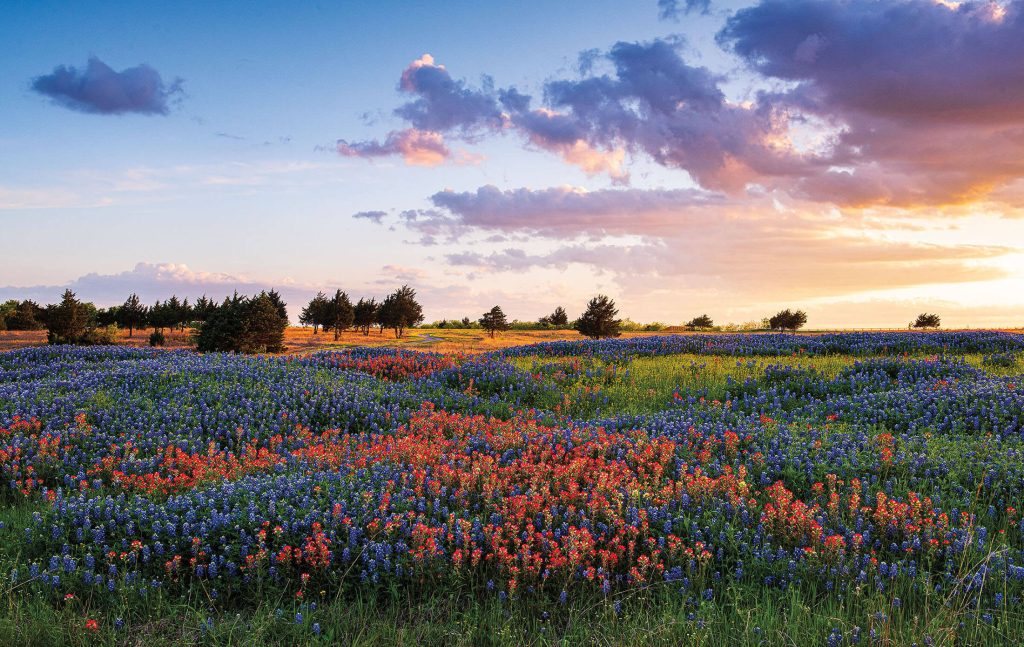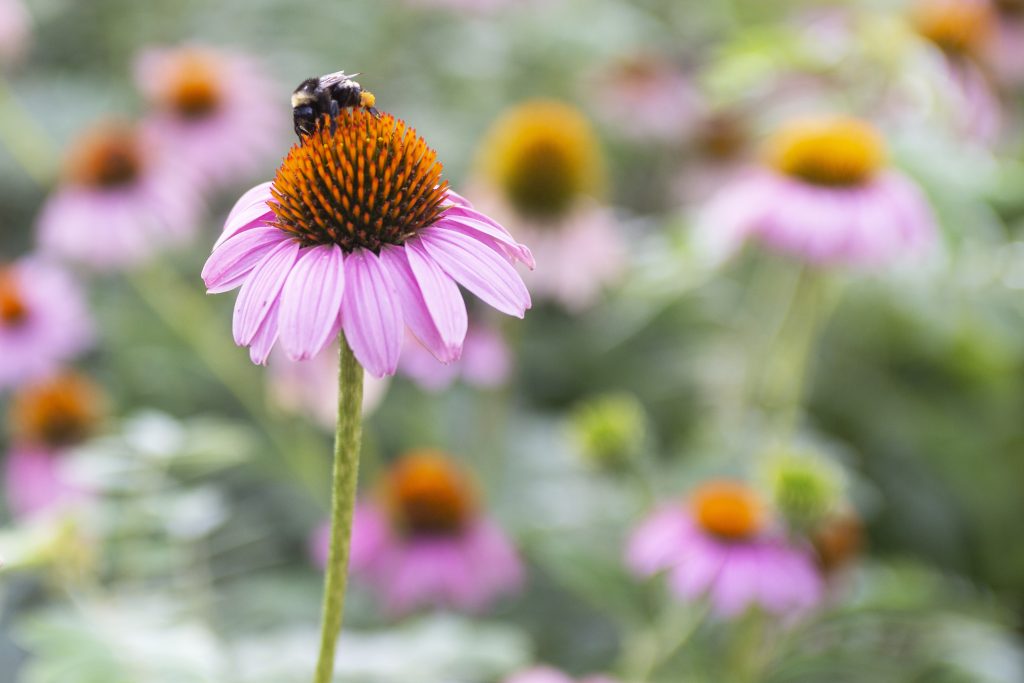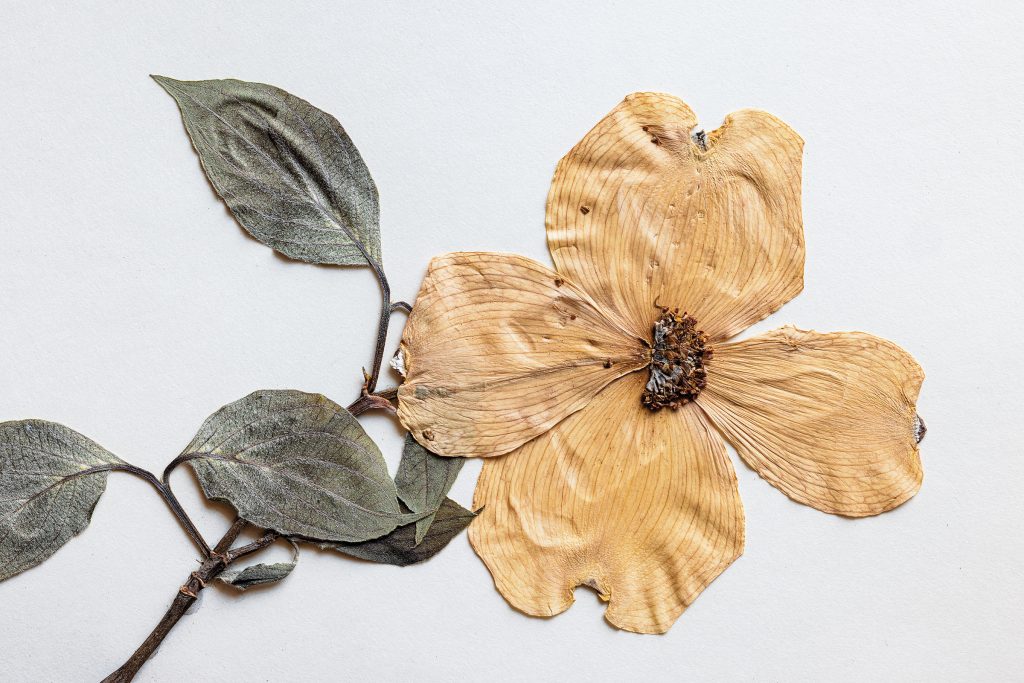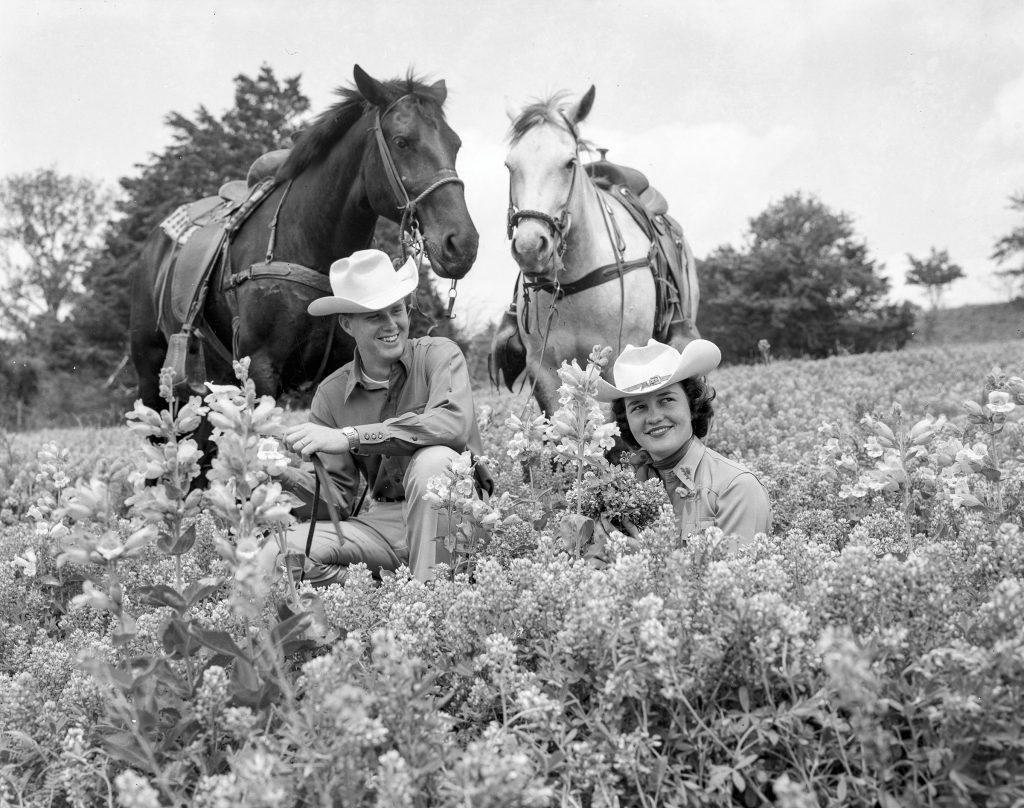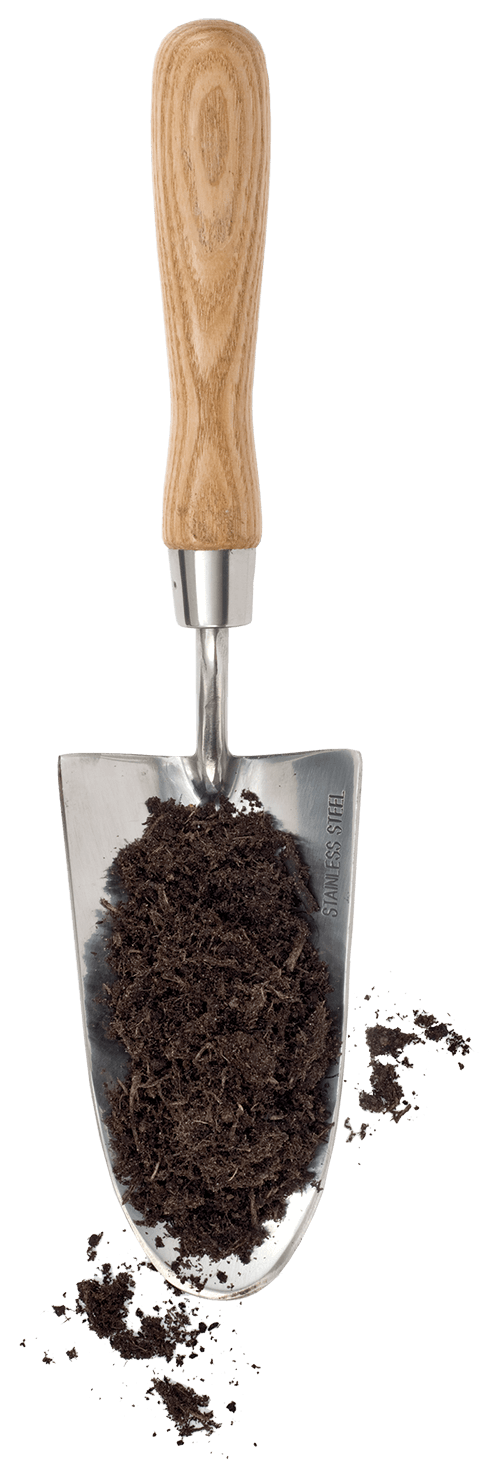
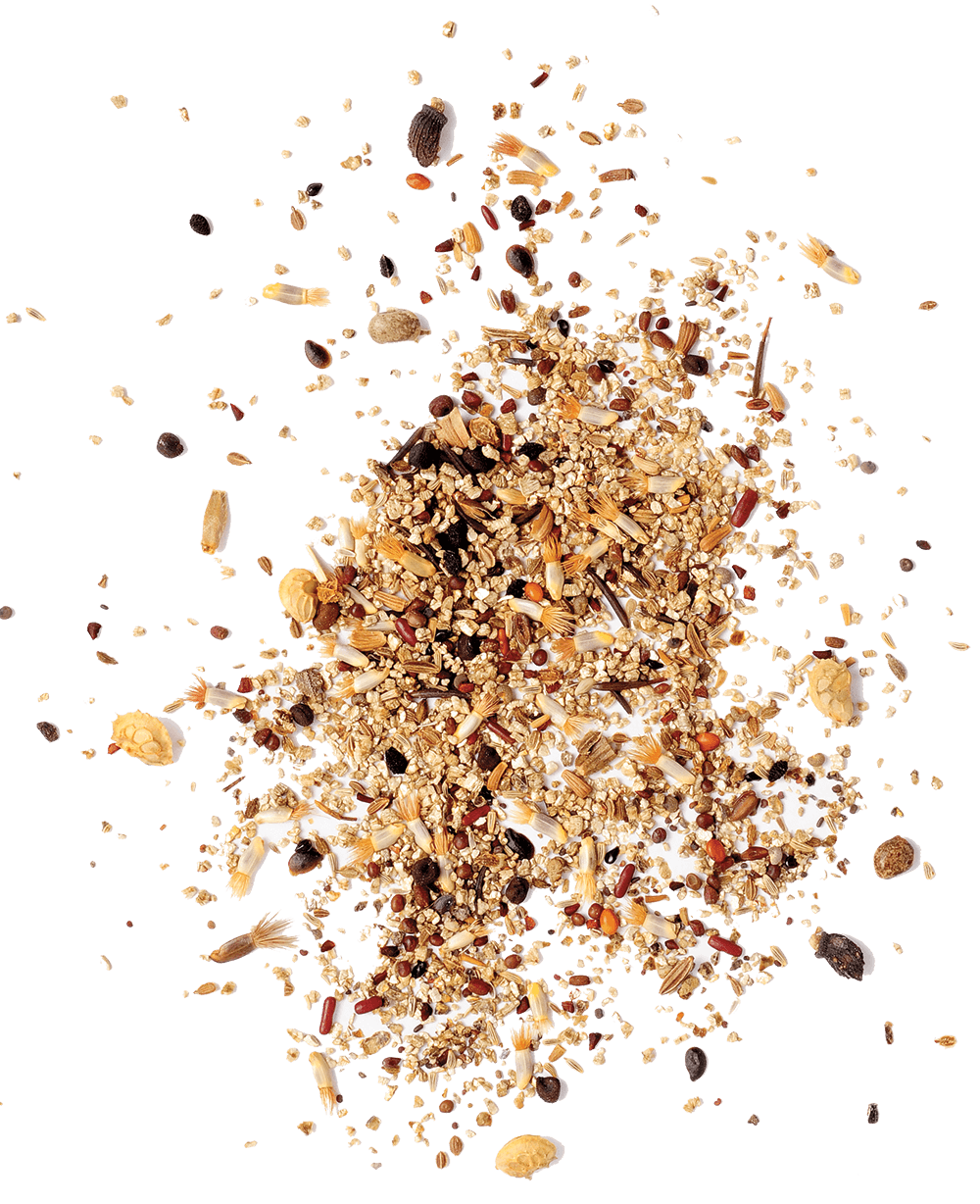
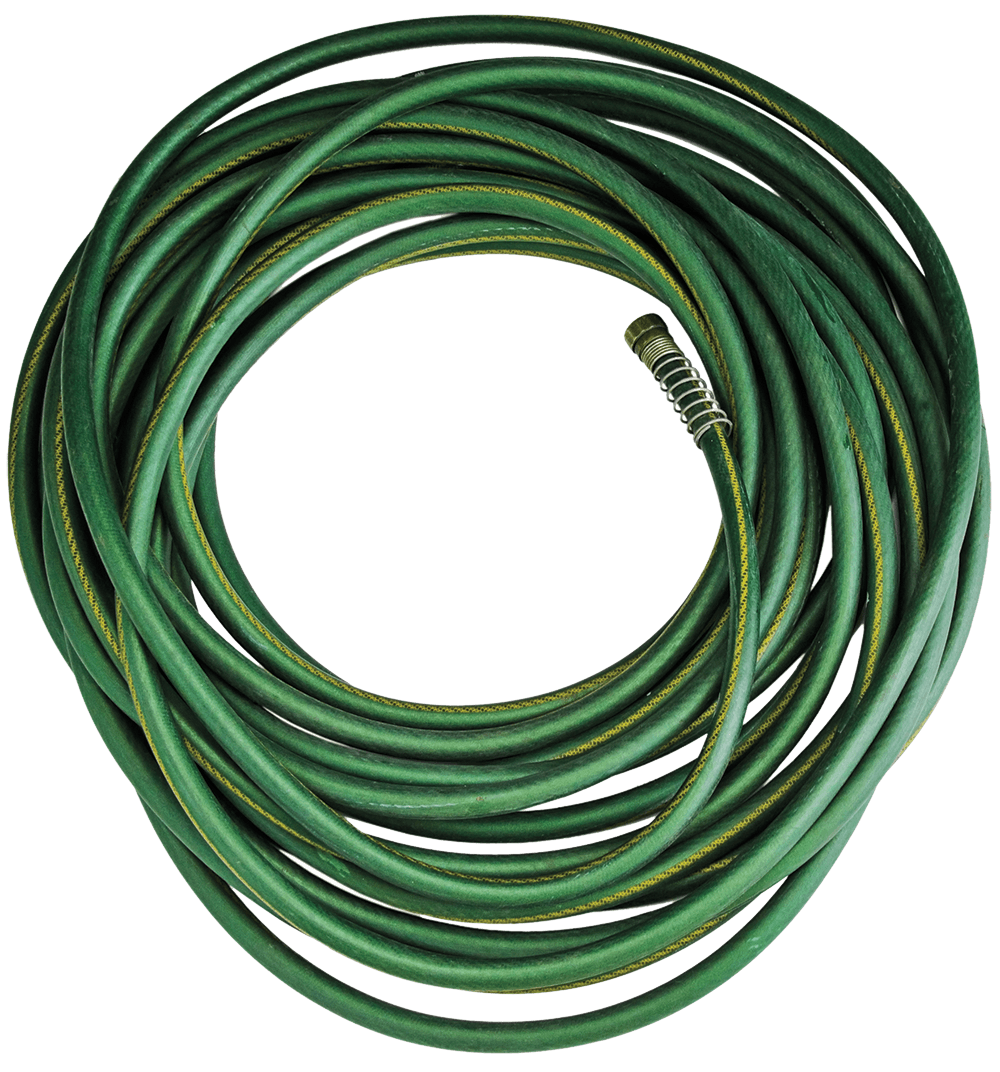
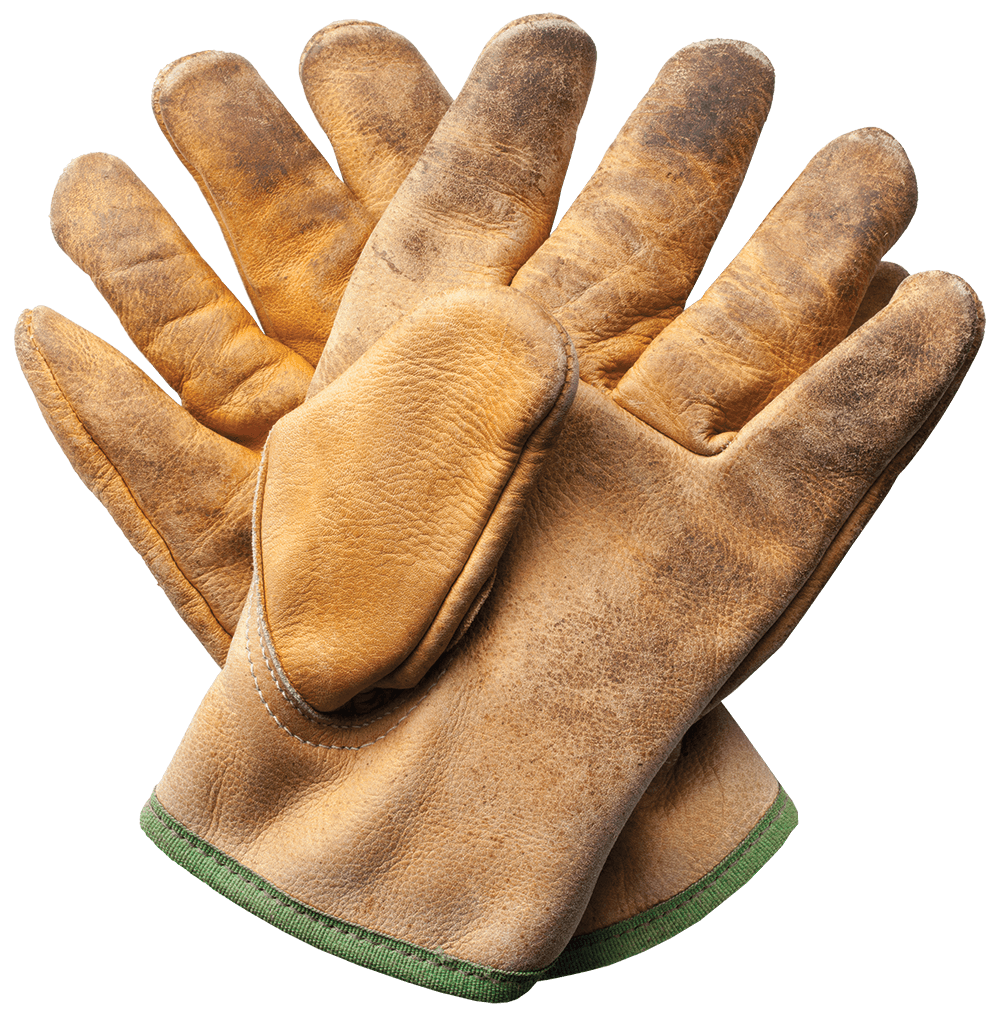
Wildflower Growing 101
Plant a wildflower meadow with these expert tips
By Daniel Blue Tyx
Wildflowers have imparted color and beauty to the Texas landscape since the days when bison roamed the plains and prairie grasses swayed in the wind as far as the eye could see. More recently, Lady Bird Johnson popularized the planting of wildflowers along roadsides, writing a whole new chapter of colorful Texas lore.
It’s easier than you might think to grow your own patch of iconic Texas blooms at home. With a little bit of preparation up front, you can create a wildflower garden that will provide a flourish of spring color with much less maintenance than a lawn or more formal garden. Planting native Texan wildflowers also provides vital nectar and habitat for birds, butterflies, and bees, so you’ll be helping the environment at the same time.
All it takes to get started is a patch of dirt, a bag of seeds, and a healthy dose of patience. Once your garden takes root, you’ll be enjoying its splendor for years to come.
Plant in the Fall for Spring Color
Fall is the best season to plant wildflowers, as they are cool-weather plants that germinate when temperatures drop below 70 degrees.
The small plants that develop late in the year, called rosettes, are resistant to freezes. Over the winter months, they put down a taproot and use their tiny leaves to store up energy for the spring show. Most gardeners should plant around September or October, although those in tropical South Texas might wait until November or December.
Prepare the Ground
Picking the right spot for a wildflower garden will ensure that seeds enjoy favorable conditions. Most wildflower species require at least six hours of sunlight a day, well-drained soil, and a lack of competition from weeds and grasses. George Cates of Junction-based Native American Seed, which specializes in Texas wildflowers and prairie grasses, recommends gardeners begin by “reading the land.” If nothing is growing already, that might suggest a problem with the soil or rainfall. Conversely, too much dense vegetation means seedlings may have trouble getting sufficient sunlight.
In many areas, the only preparation required is cutting grass as short as a lawn mower is capable, followed by a light raking to expose bare patches of soil. If vegetation is too thick, it might be useful to lightly till or remove roots by hand.
Cates also suggests choosing an area with a manageable scale. “If somebody has 5 acres and they’ve never done anything like this, it’s probably not a very good idea to do the entire 5 acres right off the bat,” he says. “Pick something you can manage.”
Consider Your Seed Source
Buying native seeds from reputable sources like Native American Seed in Junction or Wildseed Farms in Fredericksburg, which test extensively for seed quality, goes a long way toward ensuring a garden’s success. The seed companies can also recommend the best species or seed blends for your region. Seed packets range from $2 to $4.
Already have your seeds? Mix them with a “carrier” such as sand or potting soil to ensure even distribution. Then, scatter the mixture on top of the soil, making sure the seeds make contact with the bare earth.
Walking across the patch to press the seeds into the soil will help keep them in the intended area—a perfect task for a group of kids looking to play.
Know When to Water
Seeds will germinate once the soil temperature dips below a certain threshold and water is available—typically before a cold front with a good rain. If the weather is unusually dry, the process can be sped up by watering. However, if you decide to water, you need to make sure the area stays moist until germination, which usually requires watering twice a day.
“Once you achieve germination, you’re 90% successful,” says Wildseed Farms founder John Thomas. To aid young plants, pull out competing weeds and grasses. Thomas suggests planting 10 to 15 seeds in a pot so you can compare the shape and size of seedlings with those in the ground, or consulting a seed catalog or website for seedling photos.
As winter comes and goes, the main thing to do is “pray for rain,” Thomas says. Nature typically provides the periodic rainfalls needed to sustain plant development. In extremely dry winters, maintenance watering every 15 to 20 days can be useful.
When warmer temperatures finally arrive, the plants will begin to grow rapidly. By March or April, they should be ready to herald another Texas spring.
6 Common Wildflower Mistakes to Avoid
- Planting in the spring.
While wildflowers will bloom in the spring, they need cool soil temperatures in order to germinate. - Planting too deep.
A seed planted at a depth greater than three times its diameter won’t sprout. - Not enough sun.
Less than six hours of sunlight a day will produce “leggy” plants with long, skinny stems and few blooms. - Overtilling.
Tilling too deep can bring up dormant weed seeds. Often it’s sufficient to lightly rake the area. - Planting in low-lying areas.
Wet places are typically weedy, and wildflowers prefer well-drained soil. - Overwatering.
Too much water, especially after germination, can prevent oxygen from reaching the plant’s roots.
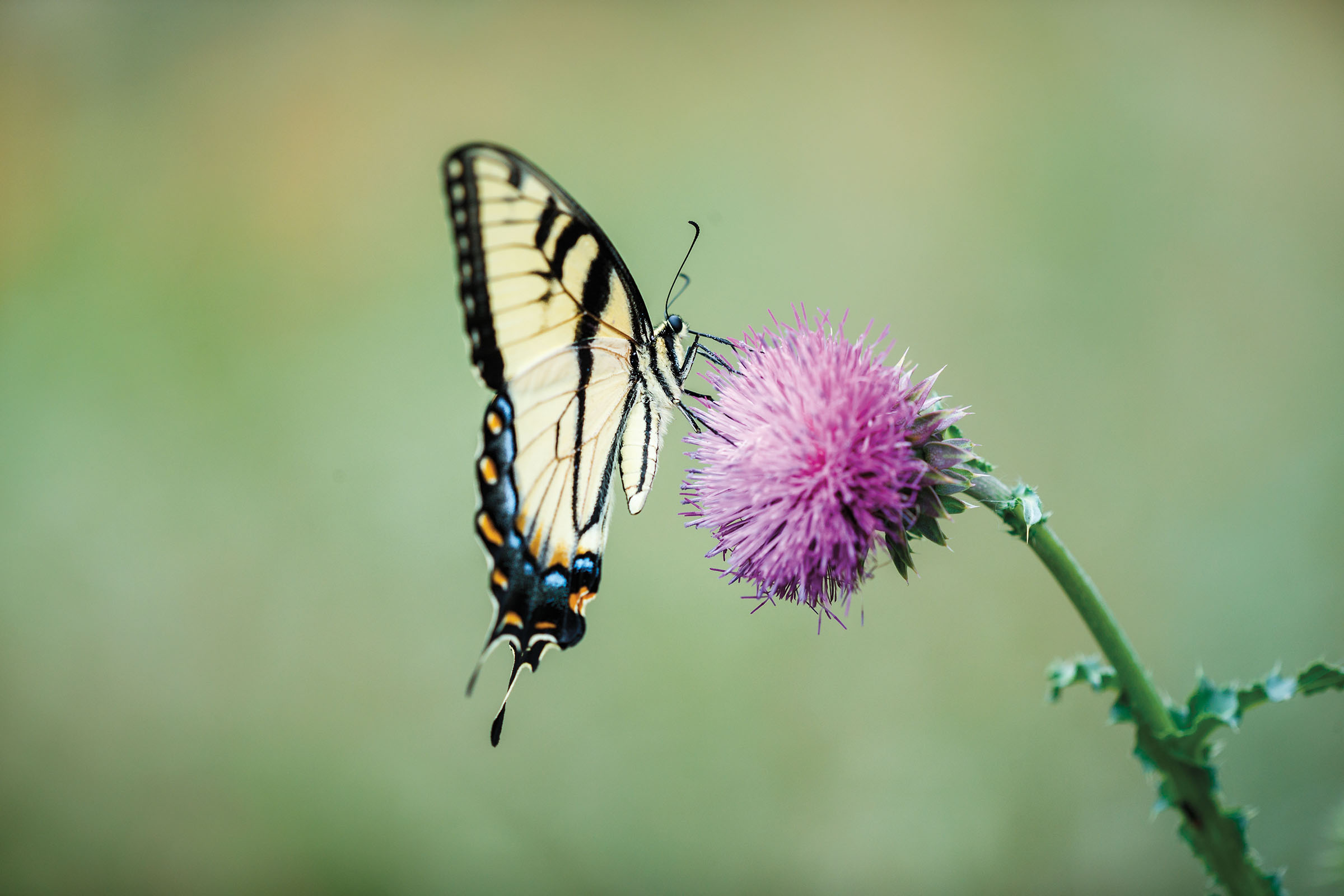
Pollinator Paradise
One of the many benefits of growing wildflowers is to provide nectar for birds, butterflies, and bees. Many are host plants for caterpillars as well. Some of the best species for attracting pollinators include Indian blanket, purple coneflower, golden eye daisy, phlox, horsemint, and milkweed (especially for monarchs).
Assist Seed Dispersal
Most familiar wildflower species, such as bluebonnets and Indian paintbrushes, are annuals. This means the entire plant dies in the summer, during which time its seeds are ready to be dispersed for the coming year.
Birds and other creatures do much of the work, but a little human help is also beneficial. Once the flowers are completely dry and brittle—typically after the Fourth of July—use a weed wacker or lawn mower (with the mulch feature on) to cut the patch to a height of 4 to 6 inches. This assists seed dispersal while also reducing competition from unwanted weeds and grasses.
From there, the cycle begins all over again with minimal effort. “The area will provide you with free seeds in perpetuity,” Cates says. “All you have to do is get the process started.”
Know Thy Region
Wildflowers are abundant everywhere in Texas, from the Piney Woods to the Hill Country to the Panhandle. Given how big Texas is, though, it isn’t surprising that some species do better than others in different corners of the state.
“There are definitely good varieties for each region,” says Jennifer Wilson, owner of Wild August Nursery and Flower Farm in Harlingen. For example, Wilson says winecups and larkspur thrive in South Texas, while bluebonnets prefer a colder winter and would require more thorough care and reseeding.
The best time to plant can also differ by region. In South Texas, planting is typically done a month or two later than in the rest of the state—and the flowers begin to bloom a month or more earlier. For guidance on when to plant wildflowers across the state, go to
planthardiness.ars.usda.gov to download some helpful maps.
Ask the experts
Texas isn’t just a great place to grow wildflowers—it’s also a great place to find help doing it. Local nurseries are a good place to start, as are organizations and seed companies devoted to Texas wildflowers such as Wildseed Farms in Fredericksburg (800-848-0078; wildseedfarms.com) and Native American Seed in Junction (800-728-4043; seedsource.com).
Bluebonnet Bonanza
There are few things more iconically Texan than a field (or a garden) full of bluebonnets—and the good news is they’re relatively easy to grow with a few basic tips.
• Buy scarified seed from a reputable seed supplier. This process breaks down the seed coat, mimicking the natural process in which seeds pass through an animal’s digestive tract.
• When planting near the house or an existing flower bed, put out snail and slug bait, since bluebonnet seedlings are among their favorite treats.
• As with most wildflowers, be sure to plant in full sun in well-drained soil.
